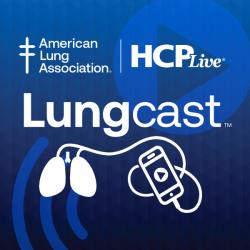
OR WAIT null SECS
Welcome Back to The Respiratory Report
In this summary, we highlight the latest issue of our pulmonology research quarterly newsletter powered by the American Lung Association Research Institute.
New developments take place all of the time in the world of medical science research, and HCPLive is committed to showcasing the experts who lead these studies. Even in the past year alone, the ever-changing landscape of respiratory health has seen a plethora of research initiatives looking at different conditions that can affect breathing and quality of life among patients.
In this second issue of The Respiratory Report, a quarterly newsletter from HCPLive which features updates from pulmonary investigators supported by the American Lung Association Research Institute, some of the latest developments in pulmonary research are highlighted. Within each issue of The Respiratory Report—available both at HCPLive.com and through our email newsletter list—a look into the development of practice-changing research is provided by the experts themselves.
Written articles and video interviews with study authors are included in every Respiratory Report iteration, with investigators sharing their latest research into such conditions as chronic obstructive pulmonary disease (COPD), asthma, rare interstitial diseases, and respiratory viruses. In a manner similar to Lungcast—another series courtesy of HCPLive and the American Lung Association—The Respiratory Report is designed to cover as broad a spectrum as possible in pulmonology medicine.
The following summary represents a preview of authors and their research featured in our second issue.
Denise Kent, PhD, APRN, is an assistant professor for the department of biobehavioral nursing science at the University of Illinois at Chicago. Kent pointed to a series of challenges that have been identified in clinical research in the US: slow participant enrollment, a variety of inefficiencies in processes, and higher costs.
Kent’s team’s research itself was an ancillary study titled Returning Computed tomography rEsults to actIVE Lung Health Cohort participants (RECEIVE). The RECEIVE study, part of the Lung Health Cohort, is focused on returning individual research results (IRRs) from chest CT scans to participants. It was designed to develop a standardized tool for returning IRRs, thereby enhancing healthcare preparedness, education of participants, and satisfaction.
Abebaw Yohannes, MSc, PhD, professor of physical therapy at the University of Alabama at Birmingham School of Health Professions, highlighted his team’s work evaluating the feasibility of duloxetine as a treatment for patients with COPD and comorbid depression. Those with COPD who also suffer from comorbid depression were described as being 3 times more likely to be admitted to a hospital versus those who have COPD but do not suffer from depression.
Addressing depression has become a significant concern for some in the COPD treatment space as a result of the comorbidity’s prevalence. Yohannes’s team’s work was conducted to determine whether the use of duloxetine, a selective norepinephrine reuptake inhibitor (SNRI), is feasible and acceptable in the treatment of individuals with depression and COPD.
Read: Exploring Duloxetine for Depression in COPD: A Pilot Study
Joselyn Rojas-Quintero, MD, an instructor in medicine at Baylor College of Medicine, has focused much of her career on improving the overall understanding of the pathophysiology of conditions such as COPD. Given the multifactorial nature of COPD, as well as the essential role of the stem-like alveolar epithelial type 2 (AT2) cells in repairing the lungs’ injured alveoli, her team explored the repurposing of metformin for patients.
Rojas-Quintero noted that treatments designed for individuals with COPD should either address AT2 cell biology and/or lead to increases in AT2 cells numbers. With this in mind, her team set out to evaluate the effects on COPD patients of metformin, a pleiotropic drug that can improve patients’ mitochondrial health and diminish oxidative stress.
Stephen Schworer, MD, PhD, assistant professor of medicine for the University of North Carolina at Chapel Hill School of Medicine, worked with a team to explore the role of mucus plugging, a process that has been observed to play a key part in severe asthma and to be the most common driver of fatal events connected with asthma. Their research was enhanced by thoracic CT imaging studies of large airways.
His team’s hypothesis was that asthmatic small airways exhibit mucus plugging with high expression of MUC5AC, the secreted mucin that can be upregulated in the large airway among patients who report asthma. They sought to expand on prior fatal asthma morphology research by the addition of biopsies of severe, steroid-resistant asthmatics.
Read: Small Airway Mucus Plugging in Severe Asthma: Insights and Implications
In The Respiratory Report, you will find something similar to what this first quartet of featured authors provided: a multifaceted package of perspectives on the innovations and solutions pushing pulmonology ever forward. We hope you enjoy our latest series.
Related Content:



